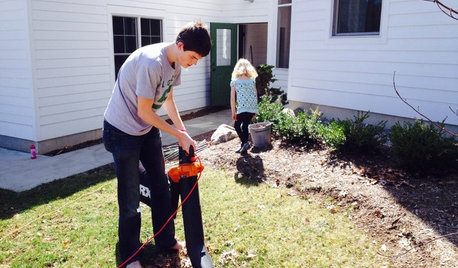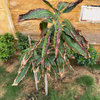Pugging Valencia Pride - but where is graft line?
bradflorida
12 years ago
Related Stories

EDIBLE GARDENSHow to Grow 10 Favorite Fruit Trees at Home
Plant a mini orchard in fall, winter or early spring to enjoy fresh-off-the-tree fruit the following year
Full Story
PETSHouzz Pets Survey: Who Rules the House — Dogs or Cats?
New data shows that pets make people happy, and pet owners love spending big to return the favor
Full Story
SMALL HOMES28 Great Homes Smaller Than 1,000 Square Feet
See how the right layout, furniture and mind-set can lead to comfortable living in any size of home
Full Story
LIFEChore Time: How to Work Better as a Family
That’s not just a crumb-strewn counter or a yard scattered with leaves. It’s a valuable opportunity
Full Story
TROPICAL STYLEMy Houzz: New York Chic and Laid-Back Hawaiian Style on Maui
A relocating New Yorker designs an island home influenced by her former city life
Full StorySponsored
Columbus Area's Luxury Design Build Firm | 17x Best of Houzz Winner!
More Discussions







squam256
bradfloridaOriginal Author
Related Professionals
New Bedford Landscape Architects & Landscape Designers · Tempe Landscape Architects & Landscape Designers · Birmingham Landscape Architects & Landscape Designers · Prairie Ridge Landscape Architects & Landscape Designers · Tomball Landscape Architects & Landscape Designers · Allentown Landscape Contractors · Dickinson Landscape Contractors · Gaithersburg Landscape Contractors · Homewood Landscape Contractors · Lake Saint Louis Landscape Contractors · Paterson Landscape Contractors · Tinton Falls Landscape Contractors · Vancouver Landscape Contractors · West Haverstraw Landscape Contractors · Selma Landscape Contractorsjeffhagen
bsbullie
bradfloridaOriginal Author
bradfloridaOriginal Author
jeffhagen
bradfloridaOriginal Author
bsbullie
bradfloridaOriginal Author
bsbullie
zands
jeffhagen
jsvand5
bradfloridaOriginal Author
zands
bradfloridaOriginal Author
bsbullie
zands
bsbullie
bradfloridaOriginal Author
jfernandez
zands